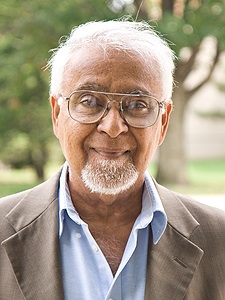 Ames, Iowa—When Space Shuttle Discovery headed toward the International Space Station last month, Iowa State University’s Rohit Trivedi took more than a casual interest. An experiment he designed more than 10 years ago to study crystal growth patterns in a microgravity environment was finally headed to its destined location onboard the International Space Station. Trivedi, an Anson Marston Distinguished Professor of Engineering in the Department of Materials Science and Engineering, is now eagerly waiting for the day in November when real-time video of his experiment will begin being transmitted to his lab in Wilhelm Hall.
Ames, Iowa—When Space Shuttle Discovery headed toward the International Space Station last month, Iowa State University’s Rohit Trivedi took more than a casual interest. An experiment he designed more than 10 years ago to study crystal growth patterns in a microgravity environment was finally headed to its destined location onboard the International Space Station. Trivedi, an Anson Marston Distinguished Professor of Engineering in the Department of Materials Science and Engineering, is now eagerly waiting for the day in November when real-time video of his experiment will begin being transmitted to his lab in Wilhelm Hall.
The experiment, which is one of only six materials science experiments currently approved by NASA for flight and the only one that has been sent to the space station, has important ramifications for the development of new materials. “The different shapes and patterns in a materials’ structure govern the properties of materials,” Trivedi explains. “Our experiment is designed to record the crystal growth process as the material solidifies, and that will help us understand the physics of how these structures develop so that we can precisely design new materials to have specific properties. The experiment needs to be conducted in the low-gravity environment of outer space because on the ground convection effects mask the physics.”
Trivedi, who is also a senior metallurgist with the U.S. Department of Energy’s Ames Laboratory, and colleague Alain Karma, a theoretical physicist at Northeastern University in Boston, are collaborating with the French space agency, Centre National d’Etudes Spatiales (CNES), on the project. With input from Trivedi, CNES developed the specialized equipment called DECLIC (device for the study of critical liquids and crystallization) that is now on the space station. Once the data starts coming back, Trivedi and Karma will begin analysis to compare the experimental results with their theoretical model. (Ames Lab news release)